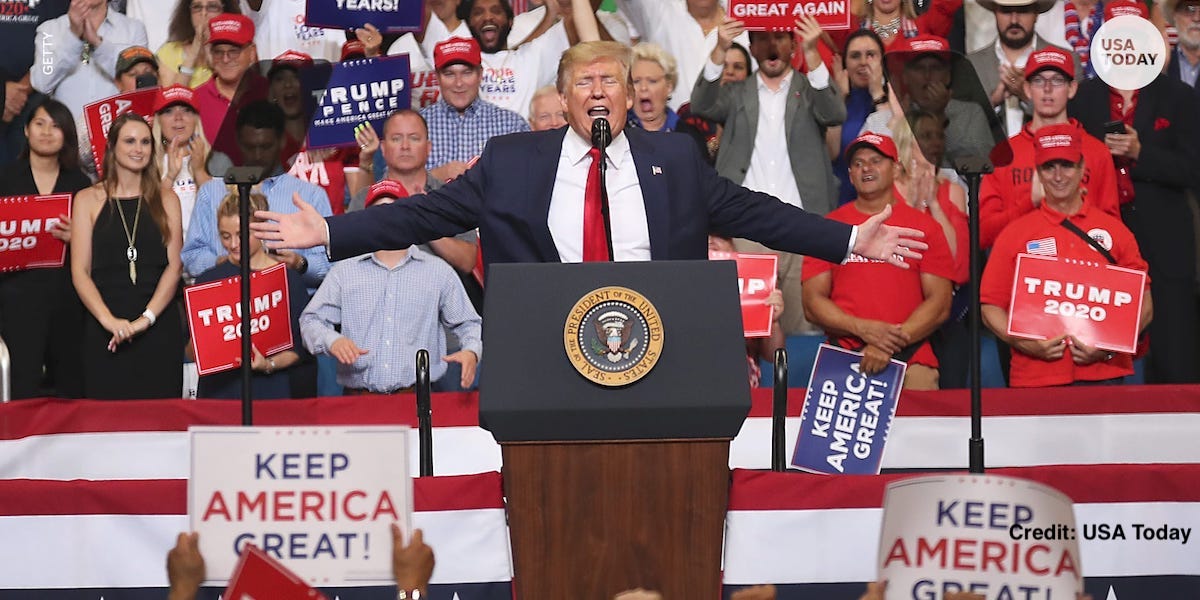Washington, D.C., June 24 – President Trump kicked off his re-election campaign in Florida last week. According to polling, the President won slightly more votes from people with disabilities than Hillary Clinton in 2016, but what is his campaign doing to maintain this lead in 2020?
For a presidential campaign to be fully inclusive of people with disabilities, it needs to meet the following requirements: (1) offer captioning with every video it shares or produces, (2) mention people with disabilities and their issues, (3) depict people with visible disabilities in its media, (4) reach out to the disability community, and (5) provide accessible campaign events and website. While the President has mentioned employment for people with disabilities in his 2019 State of the Union address, and issued a proclamation for National Disability Employment Awareness Month, his campaign’s online presence has not yet met the mark on inclusivity.
On the President’s official social media accounts, videos posted do not have captions. Videos on President Trump’s YouTube channel rely on YouTube’s automatic captioning, which often contains errors. These errors can be fixed for free but that has not been done on President Trump’s videos. Videos that didn’t automatically generate captions don’t have captions at all. Without accurate captions on all video content, people who are deaf or hard of hearing are being left out of the campaign.
Additionally, photos on President Trump’s campaign website and Twitter do not have alt-text, and photos on his Facebook page rely on automatically generated alt-text, which is not descriptive enough. This means that the President’s message is not accessible to people who use screen readers.
When analyzing polls, it is integral to identify the participants’ demographics and determine where the candidate stands with swing voters. One important group of swing voters are people with disabilities, who comprise 20 percent of our country’s population. And more than half of Americans have a loved one with a disability. A survey shows that fully three-quarters of likely voters either have a disability themselves or have a family member or a close friend with disabilities. Thus, if President Trump hopes to win re-election, he must represent all Americans, including those with disabilities.
At his kick-off event, the President touted his administration’s record on job creation over the past two years. While some of the claims in his speech were factually inaccurate, more and more Americans with disabilities are entering the workforce and earning an income. Out of the 22 million working-age Americans with disabilities, there are 15 million ready and eager to enter the workforce. Currently approximately half of them are employed, though many of them are underemployed or only working part time. The other half are sitting on the sidelines – eager for appropriate opportunities. Over 340,000 people with disabilities joined the workforce in 2017. As noted by the White House Council of Economic Advisors, “no group has felt the benefits of accelerated economic growth more than Americans with a disability.”
Voter research conducted by RespectAbility shows how disability issues connect to all aspects of American life. It is in the best interest of every presidential candidate and the citizens of this country for candidates to recognize disability issues during their campaigns.
“Candidates for office ignore the disability community at their peril,” said former U.S. Representative and Dallas Mayor Steve Bartlett. Bartlett, who was a primary author of the Americans With Disabilities Act of 1990, is the board chair of RespectAbility. “People with disabilities are politically active swing voters, and candidates should take note of the important issues they care about.”

[…] Trump/Pence and Access for Voters with Disabilities […]